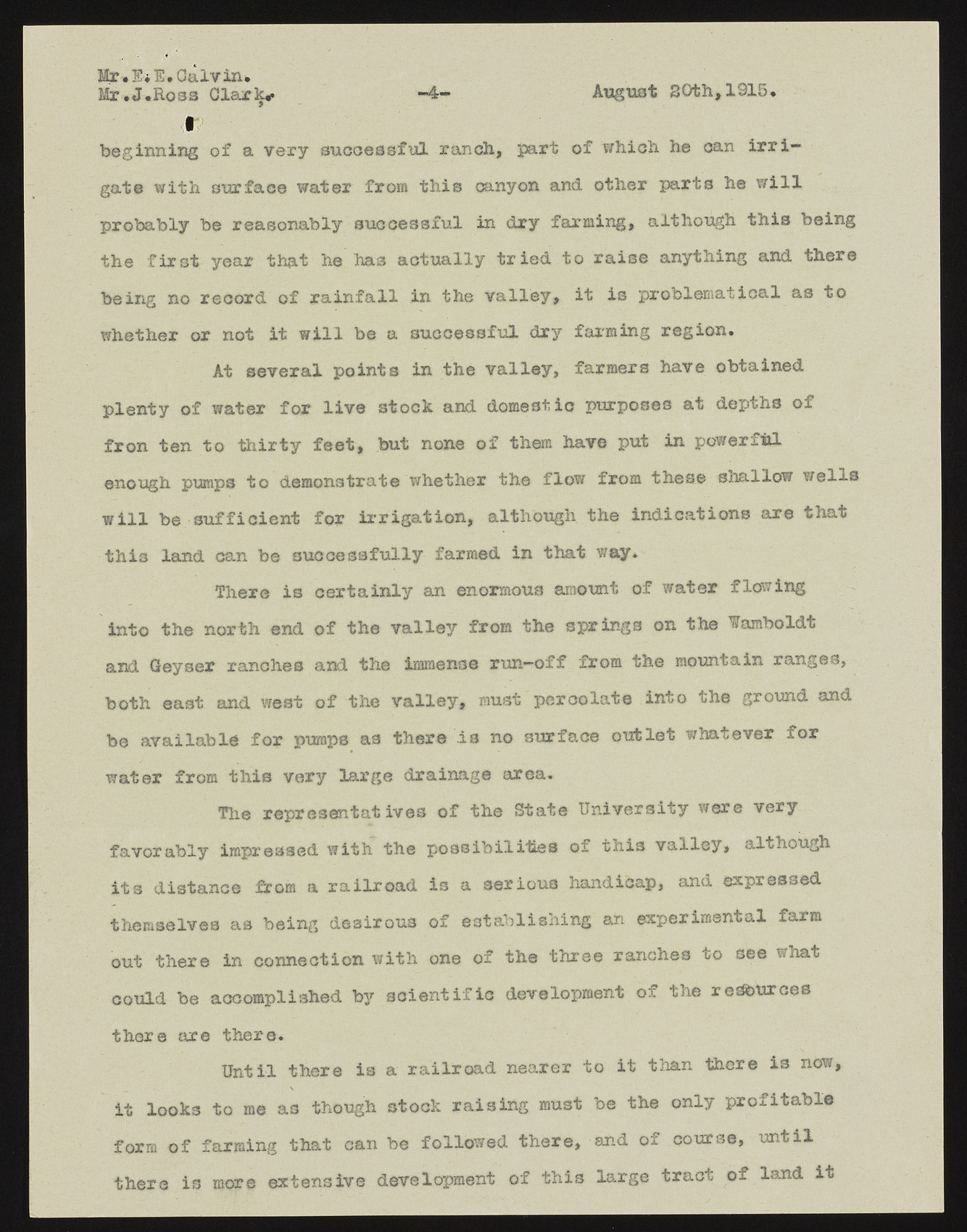Copyright & Fair-use Agreement
UNLV Special Collections provides copies of materials to facilitate private study, scholarship, or research. Material not in the public domain may be used according to fair use of copyrighted materials as defined by copyright law. Please cite us.
Please note that UNLV may not own the copyright to these materials and cannot provide permission to publish or distribute materials when UNLV is not the copyright holder. The user is solely responsible for determining the copyright status of materials and obtaining permission to use material from the copyright holder and for determining whether any permissions relating to any other rights are necessary for the intended use, and for obtaining all required permissions beyond that allowed by fair use.
Read more about our reproduction and use policy.
I agree.Information
Digital ID
Permalink
Details
Member of
More Info
Rights
Digital Provenance
Publisher
Transcription
Mr .Etl. Galvin* Mr.J.Roaa Clark* -4- August 30th,1915. i beginning of a very successful ranch, part of which he can irrigate with surface water from this canyon and other parts he will probably be reasonably successful in dry farming, although this being the first year that he has actually tried to raise anything and there being no record of rainfall in the valley, it is problematical as to whether ox not it will be a successful dry farming region. At several points in the valley, farmers have obtained plenty of water for live stock and domestic purposes at depths of fron ten to thirty feet, but none of them have put in powerful enough pumps to demonstrate whether the flow from these shallow wells will be sufficient for irrigation, although the indications are that this land can be successfully farmed in that way. There is certainly an enormous amount of water flowing into the north end of the valley from the springs on the Wamboldt and Geyser ranches and the immense run-off from the mountain ranges, both east and west of the valley, must percolate into the ground and be available for pumps as there .is no surface outlet whatever for water from this very large drainage area. The representatives of the State University were very favorably impressed with the possibilities of this valley, although its distance from a railroad is a serious handicap, and expressed themselves as being desirous of establishing an experimental farm out there in connection with one of the three ranches to see what could be accomplished by scientific development of the re^urces there are there. Until there is a railroad nearer to it than there is now, it looks to me as though stock raising must be the only profitable form of farming that can be followed there, and of course, until there is more extensive development of this large tract of land, it

